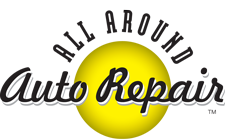Your company’s fleet of vehicles is likely one of its most costly assets, so it makes good sense to keep each vehicle mechanically sound and in the best condition possible. The following fleet vehicle maintenance checklist can help you develop an effective plan for keeping your vehicles running safely and economically, with fewer breakdowns and repairs.
Set Up Fleet Vehicle Maintenance Files
The first step in implementing a fleet vehicle maintenance plan is creating individual files for each of your vehicles either manually or electronically. Include basic information like the make and model, VIN number, tire size, and the manufacturer’s recommended mileage intervals for maintenance. You should also keep an ongoing record of all inspections, maintenance and repairs performed on the vehicle, along with the date they took place.

Create a Fleet Vehicle Maintenance Chart
After checking the owner’s manual of each vehicle in your fleet, make up a chart of the recommended mileage intervals so you can easily plan for preventive maintenance and inspections. Going forward, you can adjust the timing of your fleet vehicle maintenance appointments for any that get more use or routinely haul heavier loads.
Monitor the Condition of Each Vehicle
Give the driver of each of your vehicles the responsibility of monitoring its condition, so you can catch emerging issues right away and get them repaired quickly. The driver can take note of problems with the tires, horn, wipers, lights, steering, brakes, seat belts and other safety items. This ensures that you aware of chips or cracks in the glass, new damage to the body or interior, or issues like a malfunctioning air conditioner, defroster or heater.
Schedule Regular Fleet Vehicle Maintenance
If you don’t have a mechanic on staff, you can turn to an established automotive shop with experienced, well-trained technicians to handle your routine fleet vehicle maintenance. Using the vehicle manufacturer’s recommended time intervals as a guideline, set up a maintenance schedule with your chosen automotive professional that includes:
- Routine safety checks. Take care of these checkups at the halfway point of each vehicle’s oil change mileage interval. During the safety check, a technician should evaluate key components like the tires and brakes, lubricate the vehicle, check all the different fluid levels and make any needed adjustments.
- In-depth checks and oil/filter changes. Based on the recommended mileage intervals, have the above-mentioned safety check performed along with an oil and filter change. Additionally, have your technician take a closer look at the condition of the engine, brakes and drive train, and perform a tire rotation and alignment.
- Yearly service and inspection. When it’s time for a vehicle’s annual DOT inspection, get the oil and filter changed as well, and have a comprehensive safety check performed that covers all of the different components. A technician should check the fuel, cooling and electrical systems, the steering and suspension, and all belts and hoses. The frame and undercarriage should be examined too, along with the exhaust system, CV joints or drive shafts and movable components like doors and windows.
If your technician finds any problems during a routine fleet vehicle maintenance appointment, you’ll have an opportunity to get the issue fixed promptly and avoid the inconvenience and expense of an unexpected breakdown while the vehicle is out on the road.
If you’re looking for trustworthy, expert help with your company’s fleet vehicle maintenance needs, call us at All Around Auto Repair.

